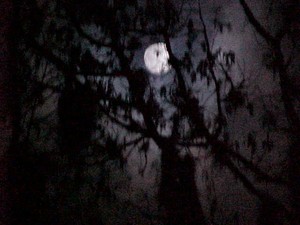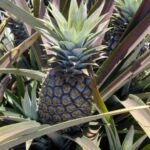One of my favorite plants is Spanish moss (Tillandsia usneoides). No one in the Southeast, the natural range of Spanish moss, needs to be shown a picture of it. Spanish moss, with its eerie layers growing on old trees, gives any scene a distinctly southern Gothic appearance.
Spanish moss: the facts
Spanish moss is neither Spanish nor is it a moss. It is a tillandsia, one of a large genus of tropical and subtropical “air plants” in the bromeliad family of plants, a family of plants which ranges from Spanish moss to pineapples, many of which have various economic, medicinal, and culinary functions.
Although Spanish moss and other tillandsias grow on other plants, they are not parasitic. Tillandsias are covered with scales to trap water and nutrients. Of course, if Spanish moss grows too heavy, it can break the limbs of its host tree, or it can shade the tree so thoroughly as to prevent the tree’s photosynthesis.
It surprises people that Spanish moss has flowers, but it does-and I’ve heard that people who have an allergy to its pollen suffer considerably. After the flowers, the plant forms seeds, which are so small that they can be distributed by the wind.
Spanish moss has been harvested for use in upholstery and in floral arrangements. Scientists have examined its possible medicinal values.
Spanish moss: the legends
There are two legends about the origins of Spanish moss. Both of the stories associate it with the Native Americans.
According to one story, a Native American woman died. Her distraught husband cut off her braids and hung them in a tree. They turned into Spanish moss and continue to this day to serve as a reminder of her life and death and his sorrow.
There is another story, more sinister, which not only accounts for the existence of Spanish moss but also for its being called Spanish. Again, there was a Native American woman. She had attracted the unwanted attention of an elderly conquistador.
After she had refused him for some time, he decided that he would take her against her will. She ran from him, but he pursued her. Finally, she climbed a tree, but, even as old as he was, the Spaniard climbed after her. She prayed to her gods to be rescued.
The branch on which the old man was standing broke. As he fell, his gray beard caught on other branches, breaking his neck.
Of course, the Spaniards came for his body, but the beard was so entangled in the branches that they had to cut it off and leave it there. And, until this very day, his beard hangs in the trees, reminding us to treat the Native American women (and, by extension, all women) with respect.
Sources
If you grow up in the Southeast, you do not need many sources beyond personal experience to write about Spanish moss. “Florida Forest Plants: Spanish-moss (Tillandsia usneoides)” is an information-packed article (here), from the University of Florida School of Forest Resources & Conservation. The “Legends and History Page: Pascagoula, Mississippi” (here) has rhyming versions of both of the legends.
If you liked this article, you may enjoy some of my other writing on plants. On Associated Content, you can find, “How I Grow Orchids in Florida” (here) and “Why Your Garden Didn’t Produce Many Tomatoes” (here). You can also read an earlier version of this article, which includes information about other plants found in the Southeast (here).






